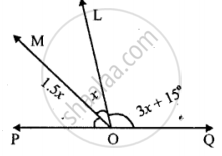Advertisements
Advertisements
Question
In your note-book copy the following angle using ruler and a pair compass only.
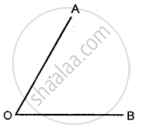
Solution
Steps of Construction:
1. At point Q, draw line QR = OB.
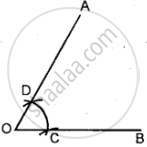
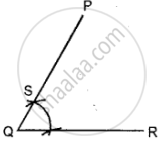
2. With O as a centre, draw an arc of any suitable radius, to cut the arms of the angle at C and D.
3. With Q as a centre, draw the arc of the same size as drawn for C and D. Let this arc cuts line QR at point T.
4. In your compasses, take the distance equal to distance between C and D; and then with T as a centre, draw an arc which cuts the earlier arc at S.
5. Join QS and produce up to a suitable point P. ∠PQR so obtained, is the angle equal to the given ∠AOB.
APPEARS IN
RELATED QUESTIONS
If ∠1 = 120°, find the measures of : ∠2, ∠3, ∠4, ∠5, ∠6, ∠7 and ∠8. Give reasons.
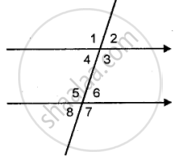
Construct the 15° angle, using ruler and a pair of compass only.
Draw a line segment PQ = 8cm. Construct the perpendicular bisector of the line segment PQ. Let the perpendicular bisector drawn meet PQ at point R. Measure the lengths of PR and QR. Is PR = QR?
Draw a line segment AB = 6.5 cm. Locate a point P that is 5 cm from A and 4.6 cm from B. Through the point P, draw a perpendicular on to the line segment AB.
Draw a line segment OA = 5 cm. Use set-square to construct angle AOB = 60°, such that OB = 3 cm. Join A and B; then measure the length of AB.
In the following figures, PQ is parallel to RS. Find the angles a, b and c:

Two straight lines are cut by a transversal so that the co-interior angles are supplementary. Are the straight lines parallel?
Two straight lines are cut by a transversal so that the co-interior angles are equal. What must be the measure of each interior angle to make the straight lines parallel to each other?
In the case given below, find the value of x so that POQ is straight line

In the case given below, find the value of x so that POQ is straight line
